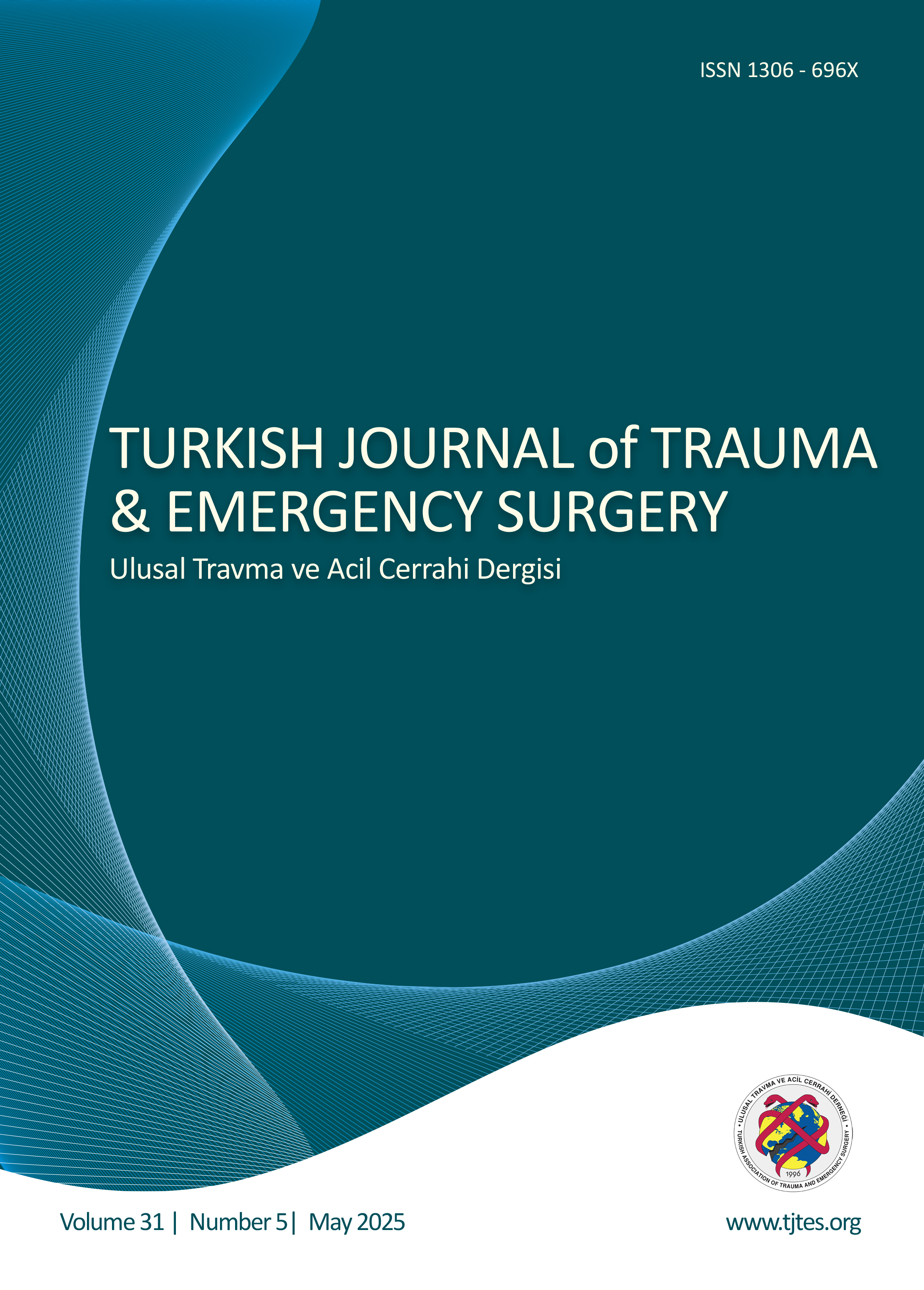Hızlı Arama
Majör künt trakeal ve özofagus hasarında havayolu yönetimi: Olgu sunumu
Kemalettin Koltka1, Zerrin Sungur1, Mehmet İlhan2, Ali Fuat Kaan Gök2, Emre Sertaç Bingül11İstanbul Üniversitesi İstanbul Tıp Fakültesi, Anesteziyoloji Anabilim Dalı, İstanbul2İstanbul Üniversitesi İstanbul Tıp Fakültesi, Genel Cerrahi Anabilim Dalı, İstanbul
Trakeanın transeksiyonel yaralanmaları oldukça nadirdir ve bu durumla anestezistlerin başa çıkması zor olabilir. Künt travmaların içinde oldukça küçük bir yer kaplayan toraks yaralanmaları, travma sonrası ölümlerin %25ini oluşturmaktadır. Bunun sonucunda ortaya çıkan solunum yolu hasarı %0.52 oranında görülür. Tek bir travma merkezinden yakın zamanda yapılan bir çalışmada, künt toraks yaralanmaları nedeniyle trakeobronşiyal hasar insidansı %0.4 olarak saptanmış. Trakeal transeksiyonu olan hastaların çoğu, hava yolu kaybı nedeniyle olay yerinde hayatını kaybeder. Hastalar çoğunlukla, ses kısıklığından solunum kollapsına kadar değişen klinik özellik yelpazesine sahiptir. Derialtı amfizem olası trakeobronşiyal hasarı (TBH) düşündürmesi gereken en yaygın bulgudur. Konservatif yaklaşımın olumlu sonucları nedeniyle acil cerrahi girişim nadiren tercih edilir. Künt toraks travmasına bağlı trakeobronşiyal yaralanma sonrası trakeal entübasyona rağmen zor ventilasyon kliniğine sahip bir vakanın yönetimini sunuyoruz. Bu hastalarda fiberoptik bronkoskop (FOB), bölgeyi ve yaralanmanın ciddiyetini göstermek ve boyun eksplorasyonu, trakeanın primer end-to-end anastomozu, trakeostomi, faringostomi ve beslenme jejunostomisini sırasında güvenli hava yolunu sağlamak için zorunlu görünmektedir.
Anahtar Kelimeler: Fiberoptik bronkoskop, künt toraks travması; trekea yaralanması.Airway management of major blunt tracheal and esophageal injury: A case report
Kemalettin Koltka1, Zerrin Sungur1, Mehmet İlhan2, Ali Fuat Kaan Gök2, Emre Sertaç Bingül11Department of Anesthesiology, İstanbul University İstanbul Faculty of Medicine, İstanbul-Turkey2Department of General Surgery, İstanbul University İstanbul Faculty of Medicine, İstanbul-Turkey
Trans-sectional injuries of trachea are quite rare and can be extremely challenging for anesthesiologists to deal with. About 25% of post-traumatic deaths are due to thoracic traumas in which blunt injuries take a rather small place within and the resultant damage of respiratory tract is quite rare with an incidence of 0.52%. A recent review from a single trauma center revealed an incidence of 0.4% for tracheobronchial injury (TBI) due to blunt thoracic injuries. Most of the patients having tracheal transection lose their lives on the field due to loss of airway. Patients mostly present with a large spectrum of clinical features varying from hoarseness to respiratory collapse; though subcutaneous emphysema is the most common presenting sign which should remind possible TBI. Emergent surgery is preferred seldomly; such in cases of partial damage or because of late diagnosis, due to favorable outcome of conservative approach. Herein, we report the management of a case on TBI due to blunt thoracic trauma, experiencing difficult ventilation despite tracheal intubation. Fiber-optic bronchoscope (FOB) seems obligatory to visualize site and severity of injury and to ensure safe airway during procedures such as the neck exploration, primary end-to-end anastomosis of the trachea, tracheostomy, diversion pharyngostomy, and feeding jejunostomy.
Keywords: Blunt thoracic trauma, fiberoptic bronchoscope; injuries of trachea.Makale Dili: İngilizce




